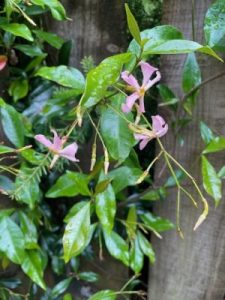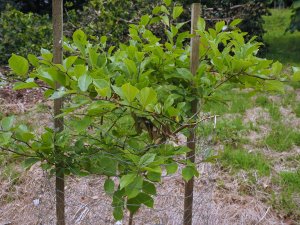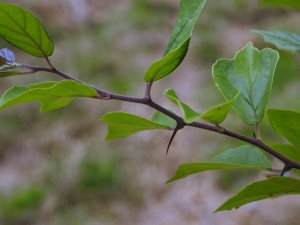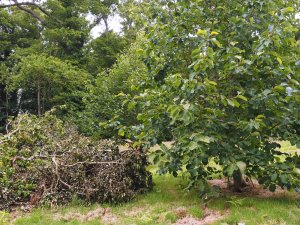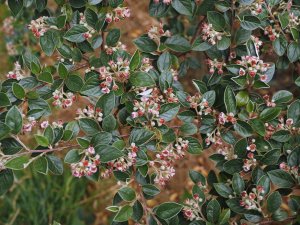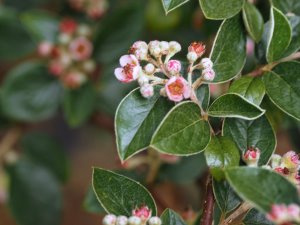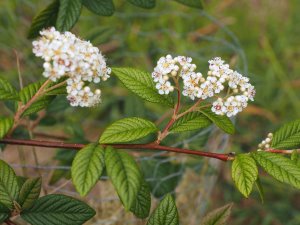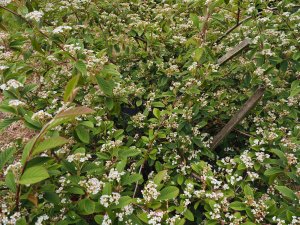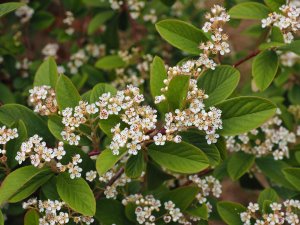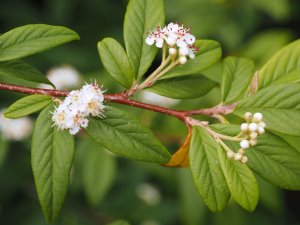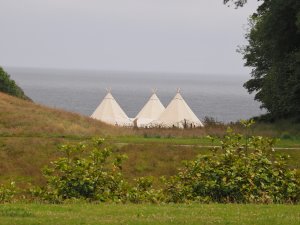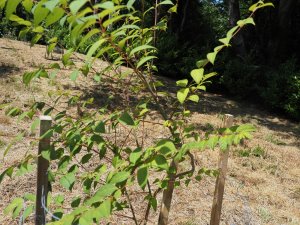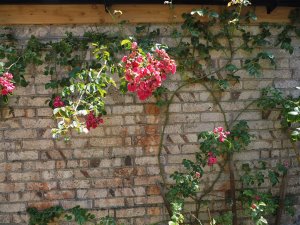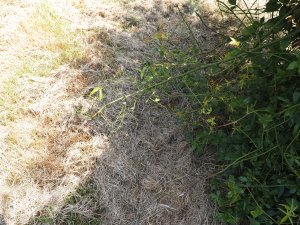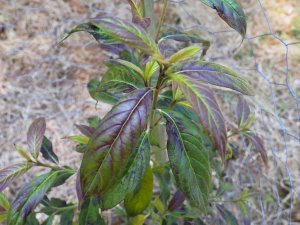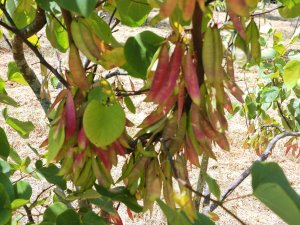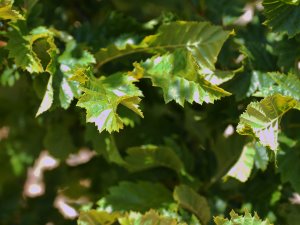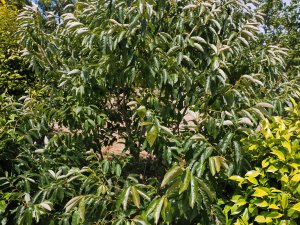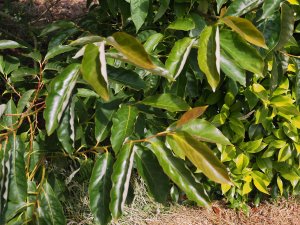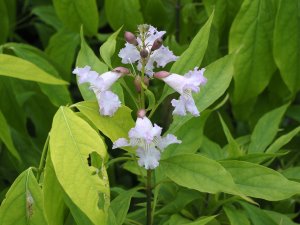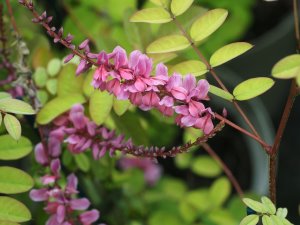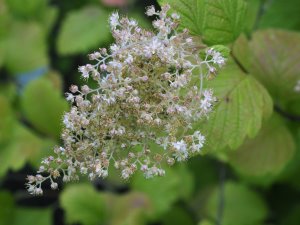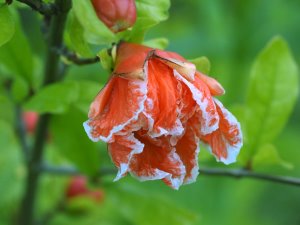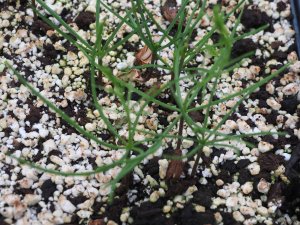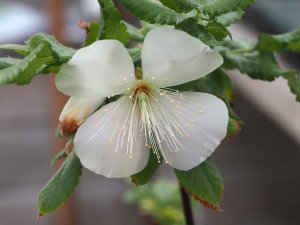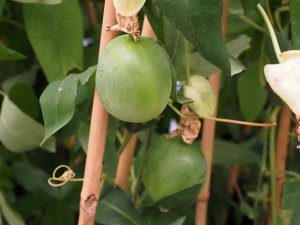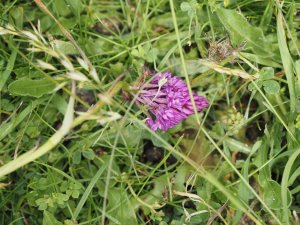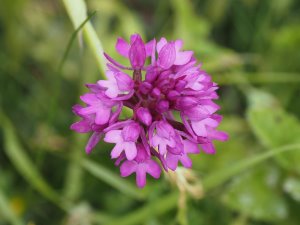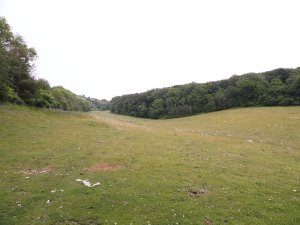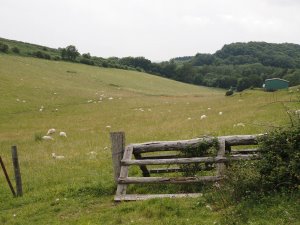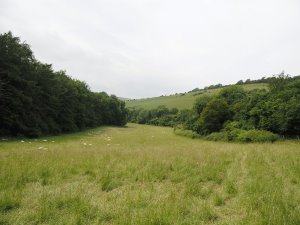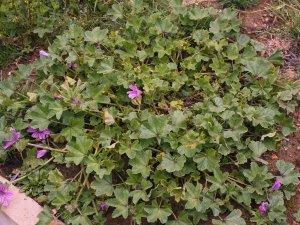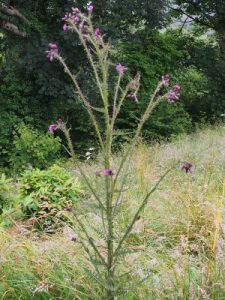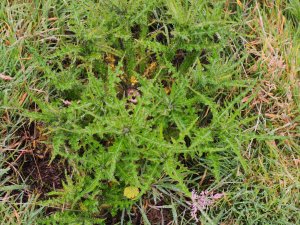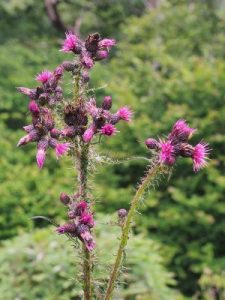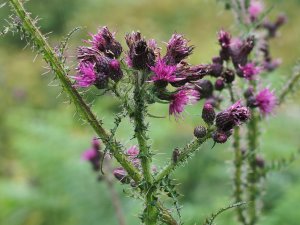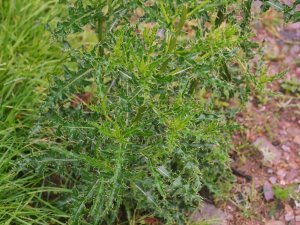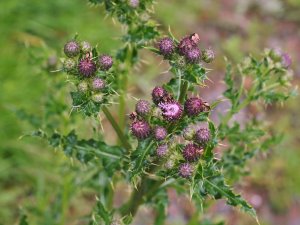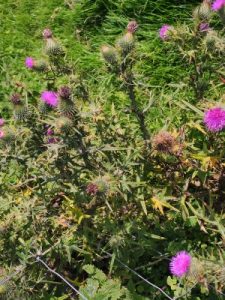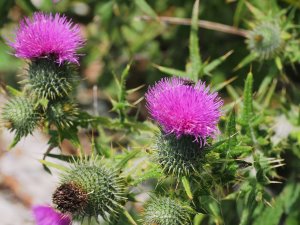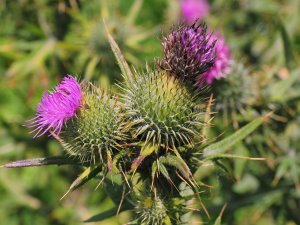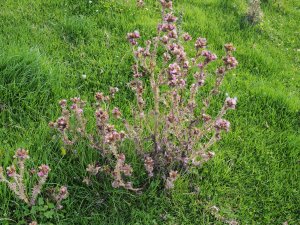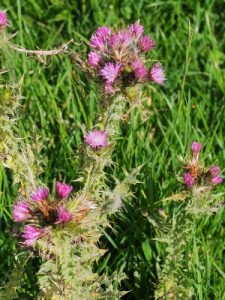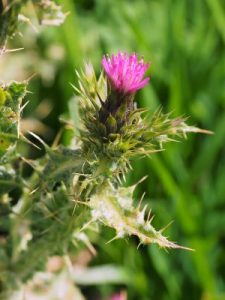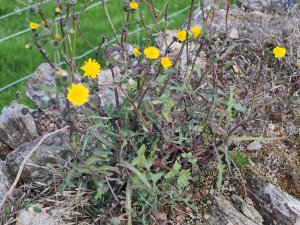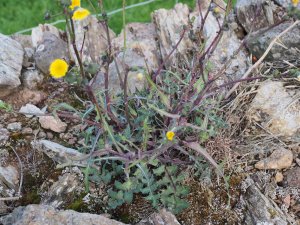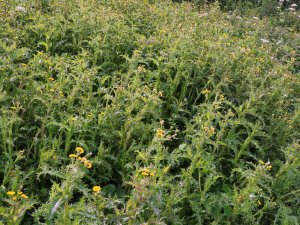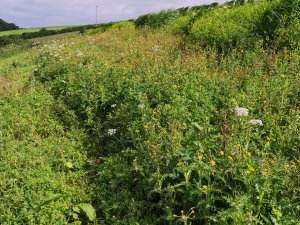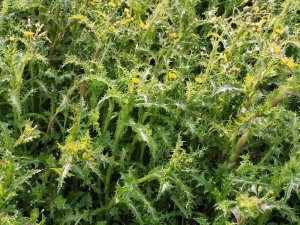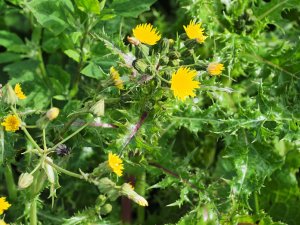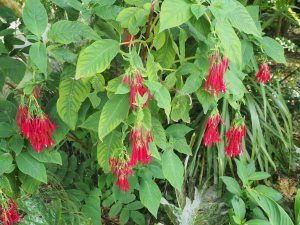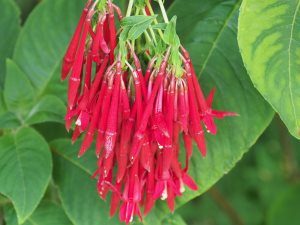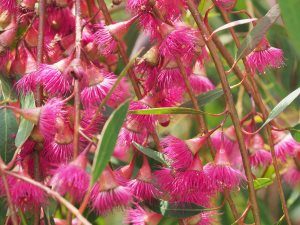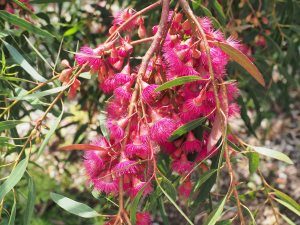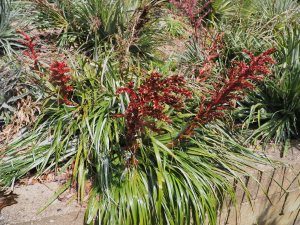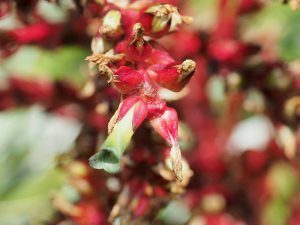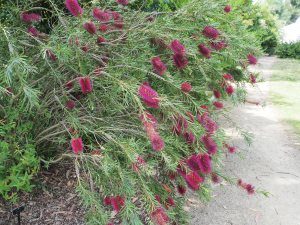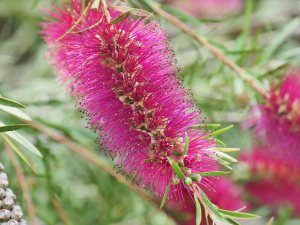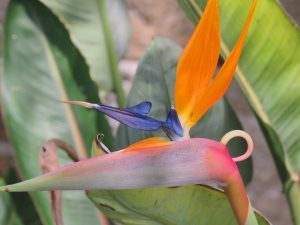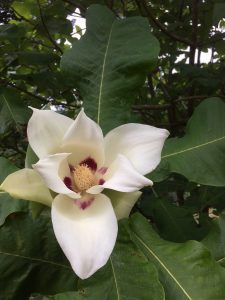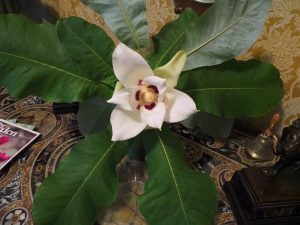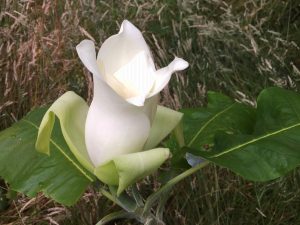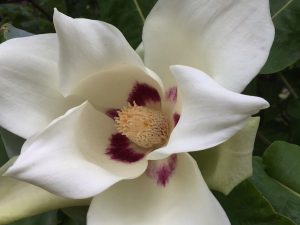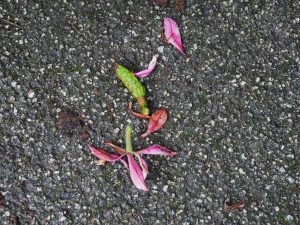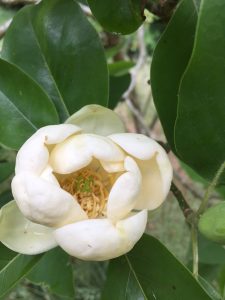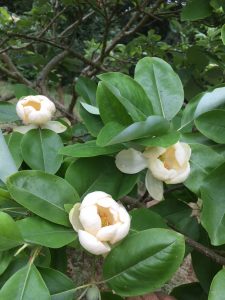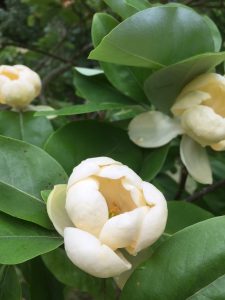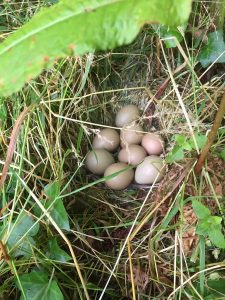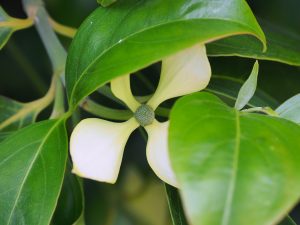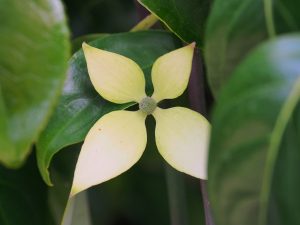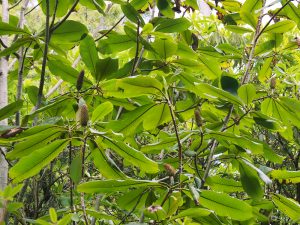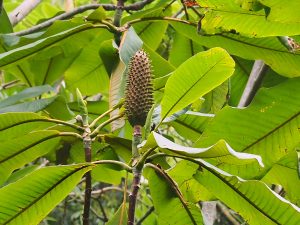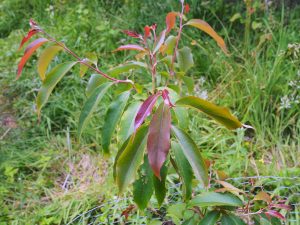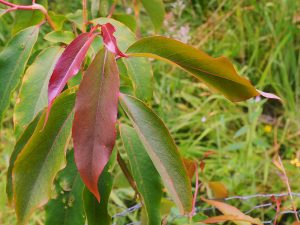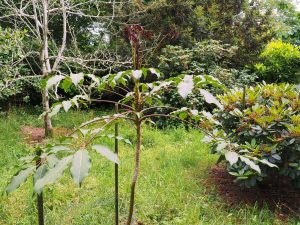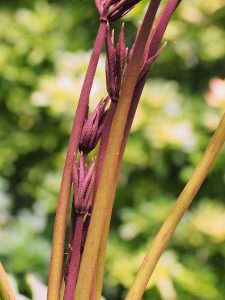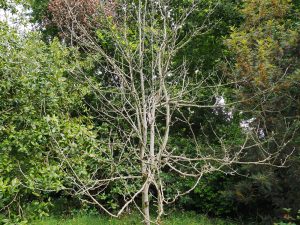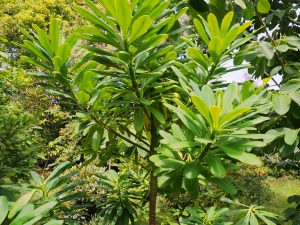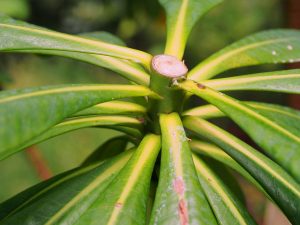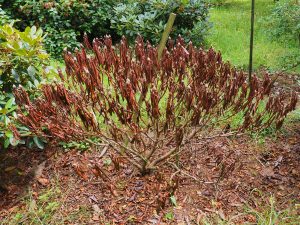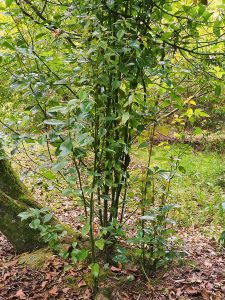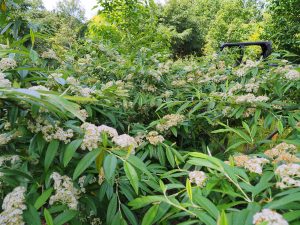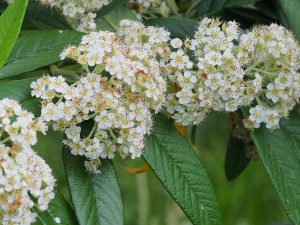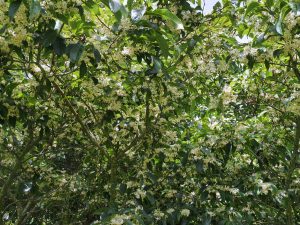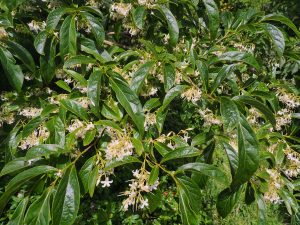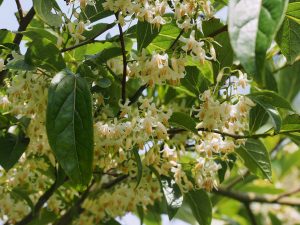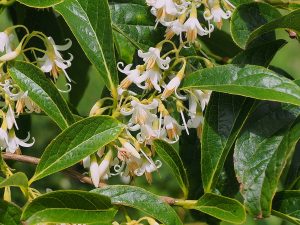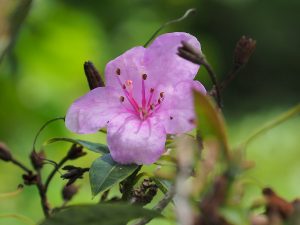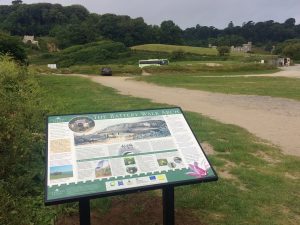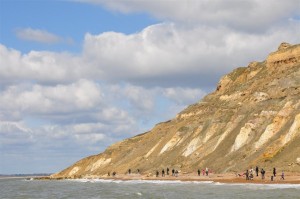2025 – CHW (images to follow)
Three adjacent gardens in a day on a whistlestop tour with Max Kendry before the cricket at Edgbaston. Bourton House Garden was described by Adam Frost in a BBC Gardeners World programme as “probably one of the BEST summer gardens I have ever seen”. I would certainly agree but why not educate with a bit of labelling?
The best hedge of Hydrangea arborescens ‘Annabelle’ I have ever seen. Perfect today and well staked without a single blemish.
Galega x hartlandii ‘Alba’ a riot of colour in the white border. A new plant to me.
Cestrum elegans – the true form and not what we have sometimes seen under this name in the nursery. What grows on the top wall by the greenhouse at Caerhays must be a hybrid.
An odd way to train ivy but different.
The shade house with all sorts of things one would not expect to be growing in the Cotswolds.
A sad sight! Phyllostachys nigra in full flower and dying. This will soon, in a few years, be countrywide. Burncoose needs to stop stocking this to avoid complaints as our plants will also soon flower seed and die.
Views of the garden.
Second stop was Batsford Arboretum for a tour with Head Gardener, Matthew Hall. A joy to have Matthew show us a whole raft of new and very rare trees which I had never seen before. Only a few are shown here on what was a very extensive trip around all their huge new plantings. Many new things to try to obtain for Caerhays.
Hoheria ‘Ace of Spades’.
Celtis douglasii with fruits.
Cornus macrophylla has not yet flowered at Caerhays but here in its full glory.
Chrysolepis chrysophylla (Castanopsis) with flower and fruit. What is the correct name for this?
Carpinus coreana – the first of 4 species which are all still missing from the Caerhays collection.
Carpinus cordata.
Carpinus laxiflora var. macrostachya.
Carpinus caucasica.
Populus wilsonii
Rhamnus alnus.
We then visited the third also adjacent garden – Sezincote.
A most unusual house.
The Orangery is to the left.
Beautiful but no labels and not that much of real horticultural interest. Drought conditions! More a picnic area and wedding venue than a garden. The bizarre house is the real attraction.
2024 – CHW
Walnuts forming again this year on Juglans ailantifolia.
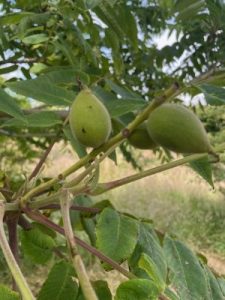
2022 – CHW
Quite a few shrubs flowering away in the nursery today.Blepharocalyx cruckshankii with its aromatic fluffy white flowers.
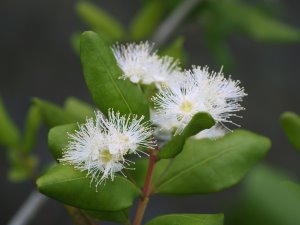
The customary pilgrimage to Will Caws’ secret 40 acres of chalk downland at the base of a steep valley where normally there are several species of orchid as I have seen over the years.Due to 300 sheep grazing and a very dry spring we failed to find a single bee orchid this year and the pyramid orchids were few and far between. Nibbled or trampled by sheep as they must have been for centuries on this sort of farmland.
A day to look at thistles and try to match up the Latin names. I am astonished to find seven separate genus names for ‘thistles’ before we even start at the species within each genus. So this is not going to be an easy quest. Several thistles have common names which are perhaps local (eg milky dysel) and not, therefore, necessarily correct, even before we get into the botanical names and identification. I doubt we will get far today but we are getting into the thistle flowering season.Cirsium, Carolina, Onopardon, Centaurea, Carduus, Sonchus and the gloriously named Silybum! Interesting that several of these genus are not unknown to the Burncoose catalogue and there is clearly rather more to most of these genus than just ‘thistles’.SILYBUM marianum is the milk thistle and is uncommon so little chance of me finding this growing locally here. More is the pity!This is Cirsium palustre, the marsh thistle, which is quite common here in the water meadows and has spread invasively up into White Stiles field. It is a native biennial and, if left on its own and uncut in its first season, it can easily achieve heights of 6ft or so as here.
Another pilgrimage to Ventnor Botanic Garden. For a garden with this title they really do need to do more proper labelling. Some new planting near the entrance was relabelled but a two year old planting of New Zealand things have lost their tiny original labels.Many wonderful things full out:Fuchsia boliviana
Jaimie has found two 15 to 20 year old plants of Magnolia macrophylla in Forty Acres wood. These are wonderful pictures of a flower from Magnolia macrophylla subsp ashei which he cut today. The dark purple central markings within the flower are normally hidden when on the tree as they were at Lanhydrock 10 or so days ago. Very blue indumentum on the undersides of the huge leaves. Quite the magnolia find of the year!
2017 – CHW
First flowers out on the shy flowering evergreen Cornus hongkongensis.
The interpretation panel for the newly restored Battery Walk Arch is up in the beach car park.
2003 – FJW
(Handwritten note attached to Garden Book page)
Quercus turneri, above Auklandii Garden: a challenged wisdom tells us that it does not set acorns for 60 years. The plant at Caerhays has flowers on this month, shows signs of small fruit.
1975 – FJW
Rain fell at 7am – drought since Chelsea time. Driest June since 1925? In the evening very heavy and spectacular thunder – no damage.
1934 – JCW
Much as in 1931 and 1932.
1931 – JCW
Eriogonums and Griersonianum are excellent. Fuschias opening. American Pillar good. Maddeni flowers very fine. Styrax japonica just open. No Auriculatums open.
1924 – JCW
Some Auriculatums hybrids are opening. Styrax hemsleyanus is just over but quite suddenly Discolor are nice. Hybrid Escallonia not open yet.
1922 – JCW
Just a day or so behind 1917. Styrax wilsoni – daisypetallum – langllangense and japonica have flowers on them but hemsleyanus is over. The Wilson Discolor in the Beech Walk is just now flowering again fairly well for the first time since 1915.
1920 – JCW
All the above are over and I start for the Gott match tonight.
1917 – JCW
Lilium giganteums start. Wilson’s Fortunei’s at their best, Lonicera tragophylla is good. Azalea arborescens would be fine if we had a group of it, Mikado is over. Dracoenas just over. Escallonia pteroclaydon is good.
1915 – JCW
Abelia floribunda V.G. Rosa Brunonis are good, Lilium giganteum open but only a few bulbs now, I found the best pink form of Wilson’s Fortunei in the Beech Walk I have ever seen. L tragophylla good. Azalea viscosum on the wane.
1907 – JCW
Just back from Scotland, a very wet cold summer. All daff seed but Recurvas has just been picked. Roses good yet , have been very good. Rhodo’s have grown well. One or two Lapagerias open. Maddeni nearly over. Cinnabarinum a few flowers left, Keysii open. A few azaleas open.




